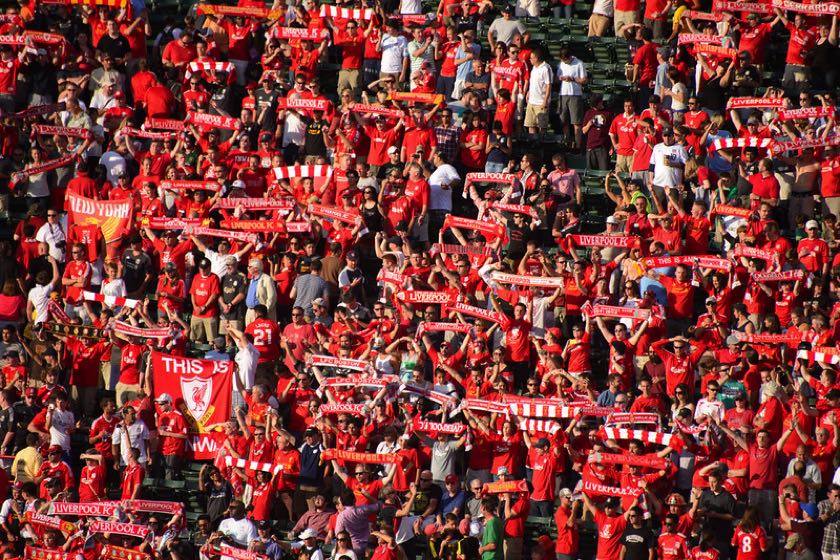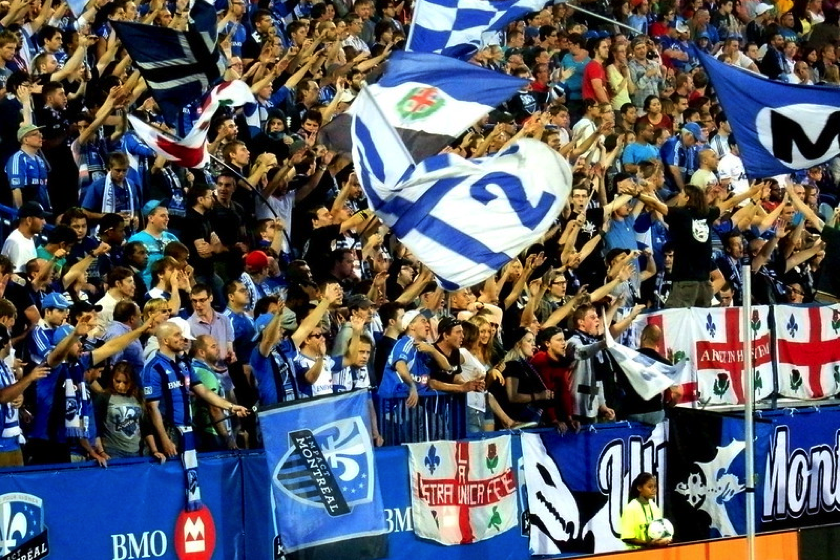Every football club, no matter how big or small, tends to have a band of supporters that are more vociferous and impassioned than their more laidback counterparts. The key when deciding the logistics of a football stadium is where to house this lively group, while catering for the needs of families – who tend to want to sit with like-minded, child-friendly supporters – and those not afraid to splash out on higher ticket prices for a better view of the pitch.
To that end, the ‘ultras’ – a group of football fans we have written about on this very site – tend to be housed together in a section of the stadium referred to as the ‘Kop’. This ‘Kop End’ is typically, although not always, where the noisiest supporters are located – helping to create a raucous atmosphere while, shall we say, politely intimidating opposition goalkeepers who find themselves defending the net in front of the Kop End. So, what really is a Kop End in football? And, how did the Kop get its name?
What Is a Kop in Football?
A Kop, historically, was a name given to a particularly steep stadium, where the fans seated/stood at the top were given an almost skyscraper-like view of the pitch beneath them. But as time has gone on, the Kop has become a more colloquial term that refers to the section of a football stadium where the loudest singers – and perhaps even a band – are located.
By banding the most vociferous supporters together, clubs can try to instigate a loud and lively atmosphere – something that lends itself to the home advantage that still exists in football to this day. The Kop End is a phrase that emanates from this – often, but not always, the Kop is located behind one of the goals in the ‘end’ stand. So, a team could be said to be ‘attacking the Kop End.’
How Did The Kop Get Its Name?

The first Kop is thought to have been found at Arsenal’s Manor Ground in the early 1900s, with the name being taken from the Battle of Spioen Kop in the Second Boer War, the conflict between, essentially, the UK and South Africa which came to an end in 1902.
The Spioen Kop, located around 20 miles from the city of Ladysmith, was a hill that stood more than 430 metres tall – a bit of a nightmare for a military operation, particularly in extreme heat. The steepness of the hill in this key battle was reported on by journalists of the time, with the imagery of that particular skirmish translated into football terms by the sheer gradient of the terraces in the stadiums being built around the same time.
A reporter likened the sight of Arsenal fans stood on the Manor Ground terracing as similar to the sight of soldiers standing atop Spioen Kop hill, while in 1906 a journalist in Liverpool inadvertently created the Kop name at the city’s Anfield stadium – a moniker that exists to this day.
Ernest Edwards, a writer at the Liverpool Echo, marvelled at a sort of open-air embankment that had been created behind one of the goals at Anfield – its sheer height designed to allow as many fans as possible to get a good view of the pitch.
“This huge wall of earth has been termed ‘Spion Kop’, and no doubt this apt name will always be used in future in referring to this spot,” Edwards, clearly some sort of time traveller, wrote. When Liverpool FC chiefs replaced the embankment with a proper stand in 1927, they decided to keep the Kop name – creating a legacy that ensures Anfield remains as one of the most iconic stadiums in world football to this day.
What Are the Loudest Kop Ends in Football?

The tragic events of the Hillsborough disaster, and the subsequent Lord Taylor Report, somewhat changed the nature of Kop Ends in English football. Amongst his recommendations to improve stadium safety was a switch to all-seater stadia, as opposed to the large standing areas that existed before.
By the mid-1990s, most of the standing Kops had been eradicated, to be replaced by seated versions. While the safety of fans has to come first, there’s no doubt that the atmosphere at games suffered accordingly. But Kop Ends live on, and some of the loudest and most passionate are found in English football.
Liverpool
 Liverpool’s Kop is right up there on the decibel count – particularly for the big games. It’s position in world football is so richly preserved that players join the club just so that they can score at the Kop End; while childhood fans of the Reds also relish netting in front of the Kop, as Luton’s Chiedozie Ogbene did in February 2024.
Liverpool’s Kop is right up there on the decibel count – particularly for the big games. It’s position in world football is so richly preserved that players join the club just so that they can score at the Kop End; while childhood fans of the Reds also relish netting in front of the Kop, as Luton’s Chiedozie Ogbene did in February 2024.
Indeed, so intoxicating is the thought of scoring in front of the Kop, Liverpool even offer a special virtual reality opportunity for fans to ‘score’ in front of a sold-out Kop End as part of their stadium tour experience. In the original meaning of a Kop End at a football stadium, the emphasis was on the steep gradient of the terracing. In this modern era, they don’t come any steeper than the Tottenham Hotspur Stadium – the Kop there stands a temperature-raising incline of 34 degrees. Great news for those seated at the top and their ability to see the action….not so great if you’re a Spurs fan suffering from vertigo.
Borussia Dortmund
 German football fans are also notorious for the sheer volume they create on matchday, and at Borussia Dortmund’s Westfalenstadion, supporters get a chance to crank it up in the South Bank – the venue’s Kop End. Home to extraordinary Tifo displays and the legendary ‘Yellow Wall’, this Kop houses a whopping 24,454 fans. Not an ideal place for away teams to visit.
German football fans are also notorious for the sheer volume they create on matchday, and at Borussia Dortmund’s Westfalenstadion, supporters get a chance to crank it up in the South Bank – the venue’s Kop End. Home to extraordinary Tifo displays and the legendary ‘Yellow Wall’, this Kop houses a whopping 24,454 fans. Not an ideal place for away teams to visit.
Officially, according to the Guinness Book of Records, the loudest Kop Ends in world football belong to two Turkish clubs – Galatasaray and Besiktas. Of the latter, at which Manchester United played, their then-goalkeeper Ben Foster commented: “It was a frightening and disorientating experience….there was no point [shouting at my defenders] because I couldn’t hear a thing!”

